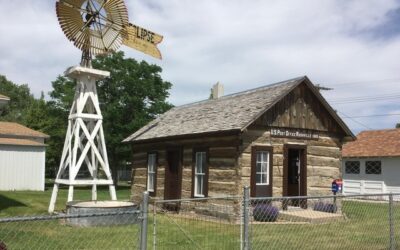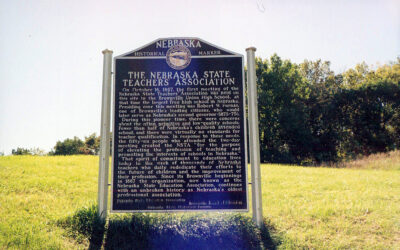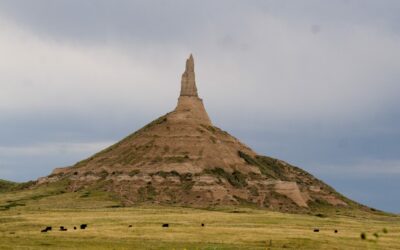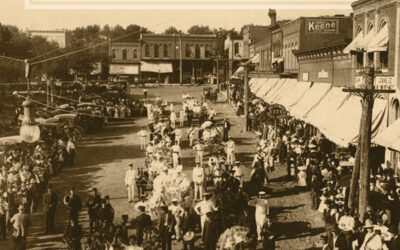The University of Nebraska marks its 150th birthday on February 15, 2019. The legislature chartered the university on that day in 1869 (though classes didn’t begin until 1871). What was it like at the early university? We’ll put it this way: if you like leaky roofs, chilly classrooms, and traditional memorize-and-recite pedagogy, you’d love early NU classes. It took time for the university to live up to its name.

By David Bristow, February 14, 2019
The University of Nebraska marks its 150th birthday on February 15. The legislature chartered the university on that day in 1869 (though classes didn’t begin until 1871). What was it like at the early university? We’ll put it this way: if you like leaky roofs, chilly classrooms, and traditional memorize-and-recite pedagogy, you’d love early NU classes. It took time for the university to live up to its name.
(Photo at top: The university’s lone building as seen from the tower of the state capitol, Lincoln, 1872. History Nebraska RG2158-23)
Not everyone was in favor of starting a university. In frontier Nebraska, many people thought it was an unnecessary luxury. Others thought it was simply premature. After all, Nebraska didn’t even have a state system of public high schools yet! The Omaha Herald said in 1871 that Nebraska needed a university “about as much as a cat needs two tails.”
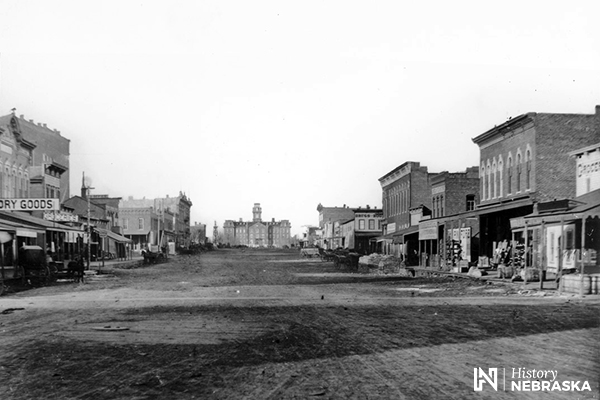
Looking north from 11th and N Street toward University Hall, 1876. History Nebraska RG2158-56
Still others believed higher education should be under the control of the churches as it had been in the eastern states. Secular state universities were still a relatively new idea.
Nebraska benefitted from the Morrill Act, an 1862 federal law that provided federal land grants to fund state universities. The law was meant not only to promote traditional classical education, but also the “useful” arts, sciences, and professions.
By state law, Nebraska combined its university and its agricultural college into one institution (like Wisconsin and Minnesota, but unlike most other states—this is why there’s no Nebraska State University). Ag colleges were another controversial idea—many people derided agricultural science as “book farming.” Nebraska City editor and politician J. Sterling Morton wrote in 1859 that ag colleges produced “kid-gloved, cologne-scented, pampered gentry, with a smattering of science—with a strong compounded laziness.”
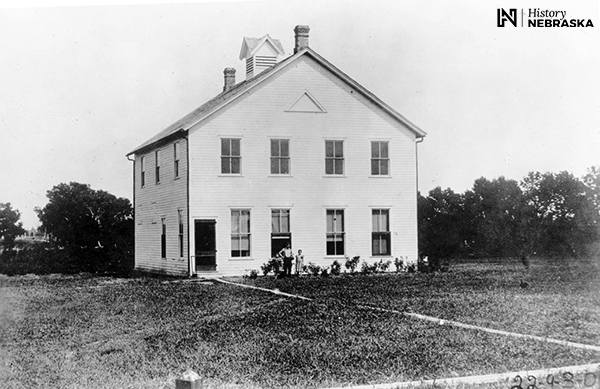
The first building at the “Farm Campus” (East Campus) was a dormitory built in 1875. History Nebraska RG2758-10-31
The University started out in a single building. Four stories tall and with a big tower, “University Hall” was larger than the state capitol. Though built at great expense, the building was drafty and so poorly built that its roof leaked and its foundation soon began to crumble.
Edward Manley was a boy living in Lincoln at the time. His father, Samuel, was one of the university’s five original professors. Years later Edward recalled that the
“flat parts of the roof were covered in tin, which was taken off periodically by cyclones and landed some miles away… The heating was never quite a success when the wind blew, and it blew most of the time in cold weather… The building was of brick except for the foundation, which was of local brown sandstone. Its resistance varied from inch to inch. Sometimes it had the qualities of granite and then those of lump sugar.”
The foundation had to be replaced within a few years after the building was completed. The building had been a big rip-off by politically-connected contractors. (Not coincidentally, Governor David Butler was impeached and removed from office for corruption in 1871.) The university considered tearing it down and starting over, but was afraid that politicians from other communities would use the occasion to move the university to Omaha or Nebraska City. So they kept propping it up with various repairs. (It was finally razed in 1948.)
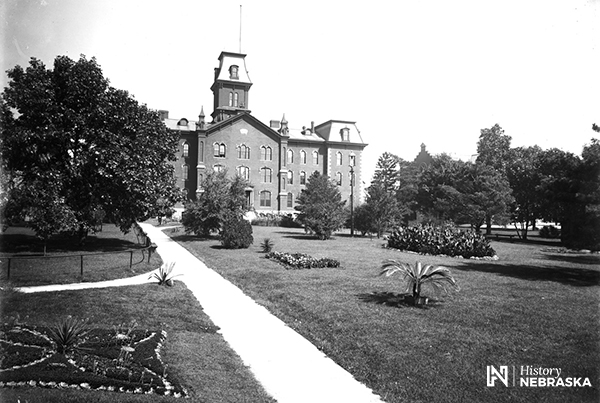
The much-repaired University Hall, still standing in 1905. History Nebraska RG2758-25
Other early NU buildings weren’t much better. It was so bad that in 1892-95, University Chancellor James Canfield supervised the construction of the new library, personally holding contractors accountable. That building, now known as Architecture Hall, is now the oldest surviving building on campus.

University Library (today’s Architecture Hall), 1901. History Nebraska RG2758-12
In the first years, the education itself wasn’t the best, either. The first professors were local ministers who taught traditional subjects by traditional methods: students memorized and recited their lessons. Ambitious early students may have gotten more out of campus literary societies, in which students presented papers and held debates.
It took a good twenty years for the university to develop into a more modern institution with professional faculty, lectures, and research-based learning. But even in the early days, the University was founded on high ideals. Education was to be available to all, a resource for the entire state. The original charter called for free tuition other than fees for music and art classed. Students paid a $5 entrance fee and $2 a term for incidental expenses.
The original charter even called for the Board of Regents to purchase textbooks and sell them to students at cost, to help students get a better deal. This never seems to have worked out in practice, but it was part of the ideal of making higher education more than a privilege for a wealthy elite.
The charter specified that “no person shall, because of age, sex, color, or nationality, be deprived of the privileges of this institution.” The charter’s language further stated that the institution was for the state’s “inhabitants,” and not just citizens. This was deliberate—Nebraska boosters hoped to build the state’s population with immigration, and they hoped to shape that population into a well-educated citizenry.
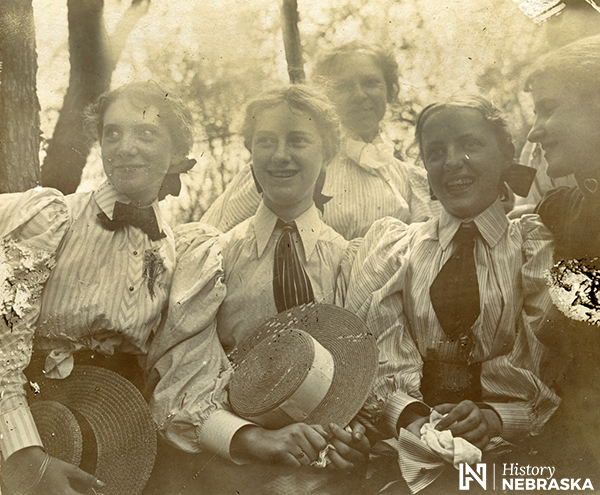
University of Nebraska students, circa 1895. History Nebraska RG716-180-22
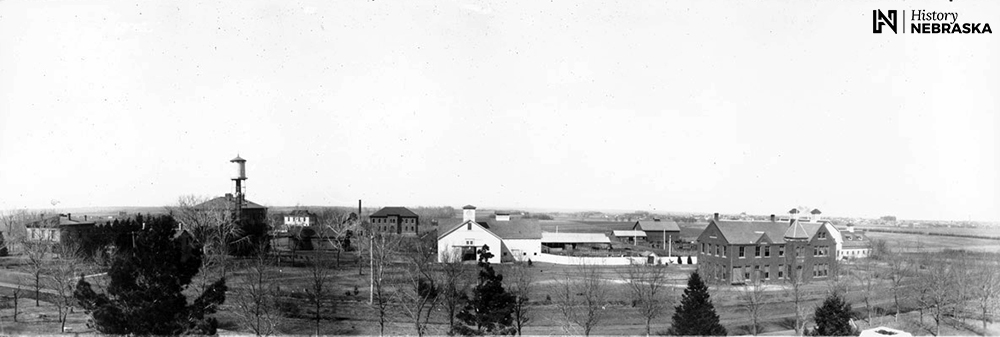
The Farm Campus about 1904-05. Center: Dairy Barn (built 1904). To its left, in the background, is the Experiment Station Building (built 1899-1900). The Dairy Building is to the right.
Sources:
“History: 1869-present,” University of Nebraska-Lincoln. Accessed 1/24/2019.
Robert E. Knoll, Prairie University: A History of the University of Nebraska. Lincoln: University of Nebraska Press, 1995.
Robert N. Manley, Centennial History of the University of Nebraska, Vol. 1: Frontier University (1869-1919). Lincoln: University of Nebraska Press, 1969.
“University of Nebraska, 1878,” Nebraska Timeline, History Nebraska.

